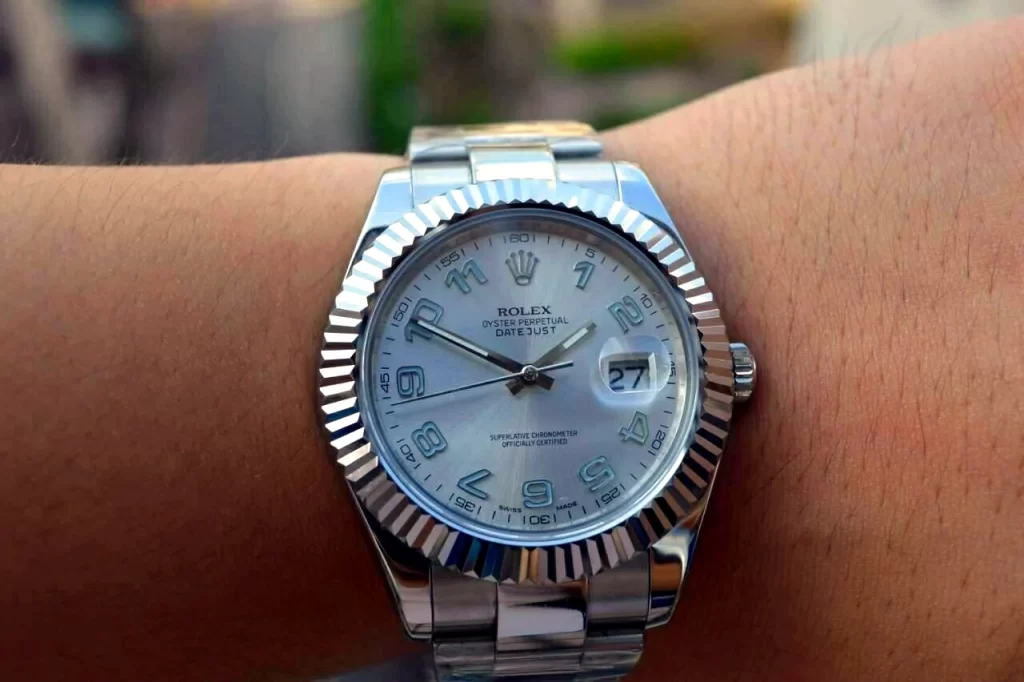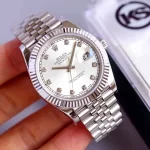The replica Rolex Daytona 116500LN Its Merits and Drawbacks
I recently received a call from my Rolex dealer notifying me that I could pick up one of the last available Daytona 116500LN models with a white dial. There seems to be a lot of chatter around referring to this model as the “Panda.” Honestly, has anyone seen a panda with rings around its eyes instead of solid black circles? I’d love to hear your thoughts on that!

For obvious reasons, I feel fortunate to have acquired this outgoing model just before its official discontinuation. While the new Daytona 126500LN, unveiled at Watches and Wonders, began arriving in stores in September, I find the 116500LN to have a more elegant appeal. Although I could list my reasons for preferring the older model, I believe Ben’s insights from a recent article capture my sentiments perfectly. Nevertheless, certain features of the updated model still make it an impressive chronograph, and I’ll reserve final judgment until I’ve had the chance to handle the 126500LN in person.
Let’s begin with the positives. This white-dial Daytona is undeniably a great watch, and I was genuinely excited to pick it up. However, after wearing it for a few hours, that initial thrill faded faster than I expected. I include this in “The Good” category because my excitement has shifted to a deeper appreciation for the watch itself.
With a wrist size of 16.5 cm, the replica Rolex Daytona‘s 38.5 mm case diameter (it’s puzzling that Rolex markets it as 40 mm) and 12 mm thickness fit perfectly. Its design is reminiscent of the Speedmaster Professional, which, despite its larger 42 mm diameter, has a lug-to-lug length that’s only marginally longer, and its case is slightly thicker than the Daytona’s. The Daytona’s rounded, polished case closely resembles that of the Datejust, Day-Date, or Sky-Dweller, in contrast to the more rugged profiles of the Submariner, GMT-Master II, or Explorer II.

The dial’s color scheme creates an optical illusion, making the watch appear larger, especially when placed next to a black-dial model. I was drawn to the Daytona’s striking black and white contrast when it debuted at Baselworld in 2016. While the previous model, reference 116520, is also visually appealing, I find the white and silver dial of the 116500LN much bolder.
As for the bracelet and clasp, they exemplify the high standards one expects from Rolex. Both components are exquisitely engineered, balancing weight and elegance perfectly. The polished center links on the Daytona’s Oyster bracelet give it a more sophisticated appearance compared to the fully brushed bracelets of other models. Additionally, the clasp features an Easylink extension, a feature that proved invaluable during the hot, humid summer months when I frequently needed to adjust the bracelet.
Now, what could be deemed “bad” about such an iconic watch? Despite its many qualities, the Daytona does have its shortcomings. One notable issue is the unconventional placement of the sub-dials. Personally, I don’t mind non-centered sub-dials in general – many watches, like the Patek Philippe 5172 and the A. Lange & Söhne 1815 chronograph, balance beautifully with lower placements. However, on the Daytona, the slightly raised sub-dials give it an awkward appearance, leading me to question Rolex’s design choices regarding the 4130 caliber. The sub-dials of the Daytona ref. 16520, which used a modified Zenith El Primero movement, were centered and looked much more appealing.
Another point worth mentioning, which may stir some debate, is the pricing. While I’m grateful to have acquired the watch at retail, I do find the price quite steep. At CHF 14,100 for this outgoing model (CHF 14,300 for the successor), it’s undeniably pricey, especially when compared to other iconic chronographs. For instance, the Omega Speedmaster Professional (Hesalite) and replica Breitling Navitimer 43 are priced at CHF 6,600 and CHF 8,750, respectively, offering what I consider better value.
Finally, I have mixed feelings about the screw-down pushers. As a fan of chronographs, I regularly use this function for various tasks, such as cooking, timing drives, and monitoring my children’s screen time. Having to unscrew the pushers can be inconvenient, particularly when both hands aren’t free, like when I’m riding my motorcycle. While I appreciate the purpose of the screw-down feature for maintaining water resistance, I sometimes wonder if it’s worth the hassle.
In terms of “the ugly,” I refer to aspects of ownership rather than the watch itself. I purchased this watch knowing I would keep it, having tried it on multiple times before. However, it’s the only fake watch I’ve owned that prompts strangers to ask how much I paid or if I would sell it. This has occurred several times in person and numerous times on watch-related social media platforms. It’s a testament to the watch’s prominence, but it also requires careful consideration of when and where to wear it.
I often receive questions like, “Where did you get it?” and “How long did you wait?” These inquiries stem from the clone Daytona’s hype and fluctuating market value, which, thankfully, has stabilized compared to a few years ago. Given the high retail price I previously mentioned, I can’t help but find the market value equally unsettling. Currently, this white-dial version trades for roughly double its retail price, which seems absurd when one could find watches from brands like Patek Philippe or A. Lange & Söhne for almost CHF 30,000.

